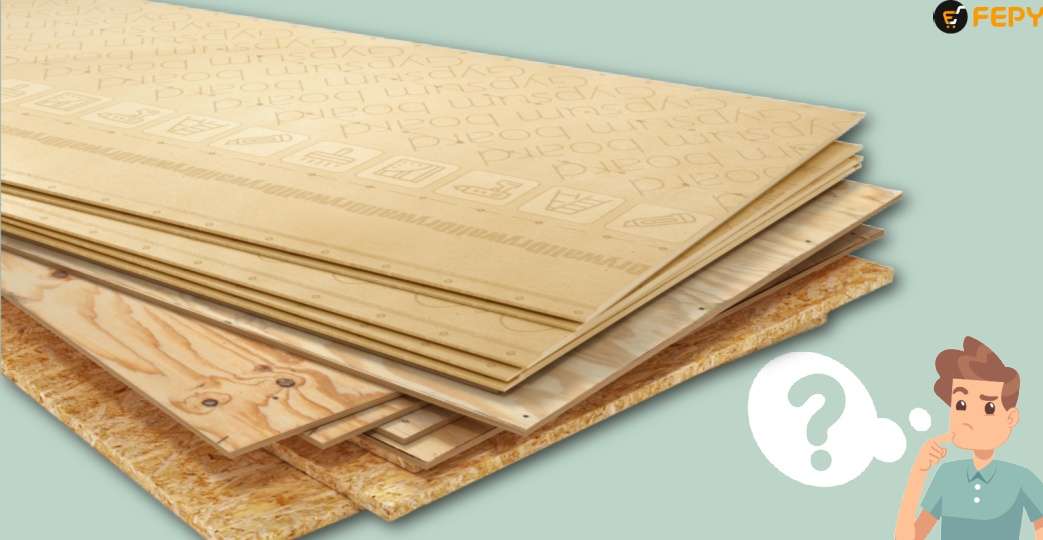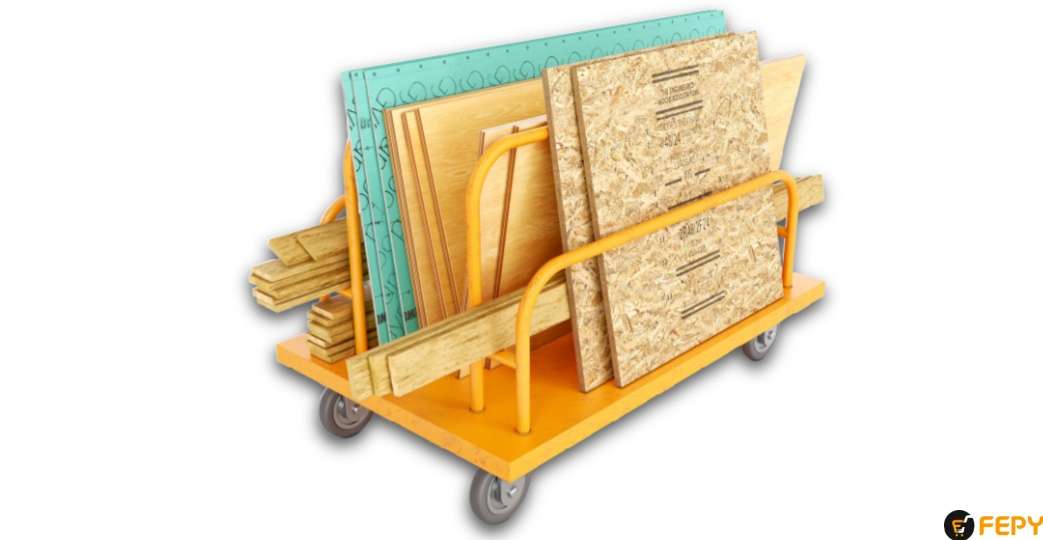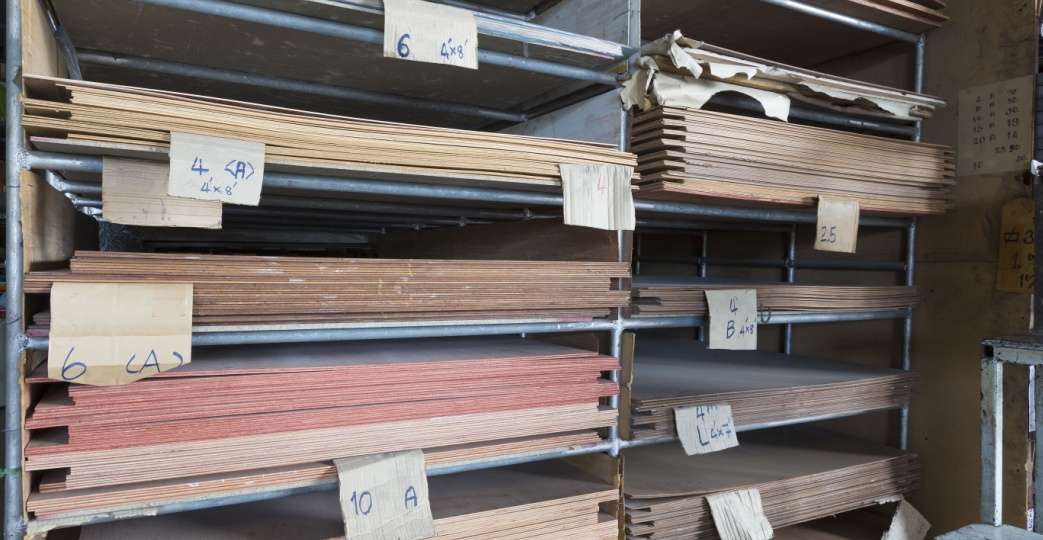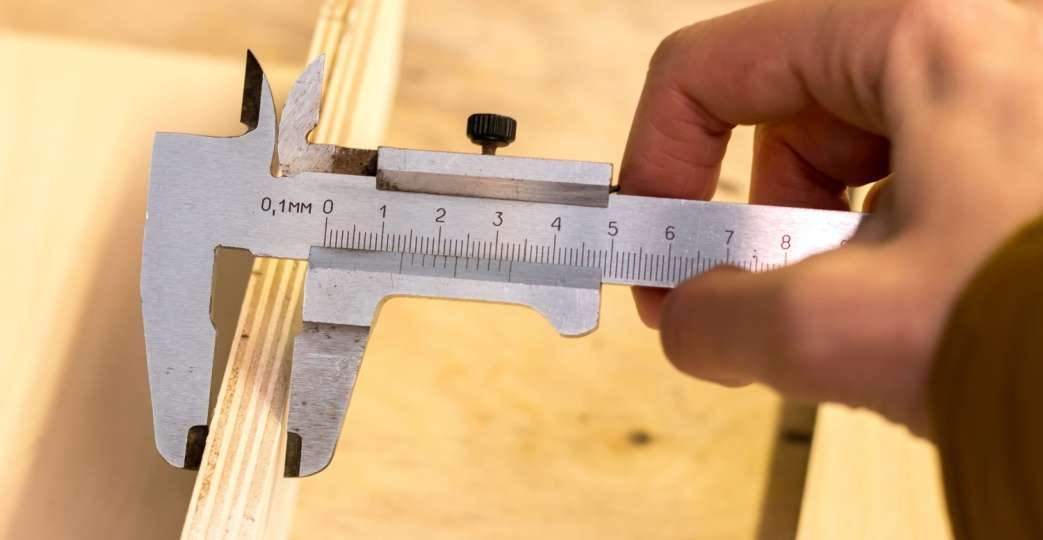How to Choose the Right Plywood for Construction

May 24th 2024
Plywood is a versatile material that lurks behind countless walls, cabinets, and furniture pieces, silently providing strength and support. But beneath its seemingly ordinary surface lies a world of variety. Choosing the wrong one can spell disaster for your project. This guide unveils the ten key factors that help you choose the best plywood for your next construction masterpiece.
10 Key Factors to Choose the Right Plywood for Construction
Let's explore the science behind the strength and the secrets of a flawless finish and uncover the wisdom construction professionals hold. Follow these ten crucial factors to choose the right plywood for construction.
1. Type of Plywood:

Before you dive headfirst into the plywood pile, different types of plywood are designed for specific environments, so choosing the right one ensures it performs well and lasts for your project.
Technical Aspects:
Consider plywood-like having specialists for every job.
Interior-grade plywood focuses on aesthetics, boasting a smooth surface ideal for paint or veneer. It makes it perfect for furniture, cabinets, and wall panelling.
Exterior-grade plywood, on the other hand, is tough. Made to withstand moisture and weather fluctuations, it's ideal for outdoor projects like decks, exposed kitchens, or balconies.
Practical Uses:
Interior-grade shine indoors with furniture, cabinets, and beautiful wall panelling.
Exterior-grade built for the outdoors! Decks, kitchens that battle the elements, and balconies are all perfect candidates.
Benefits for Your Project:
Matching the plywood type to your project's environment is crucial.
The right choice offers the necessary durability and strength, whether facing everyday wear and tear inside or battling the elements outside.
It translates to a longer lifespan for your project and saves you the hassle (and cost) of replacements.
2. Plywood Grade:

Not all plywood is created equal, and the grade tells the story. Grades range from A to D, with A as the superstar and D as the supporting actor. Here's how it shakes out:
Technical Aspects:
- A-grade: The smoothest surface with minimal defects, perfect for flawless finishes.
- D-grade: This is more of a rough-around-the-edges type, with plenty of knots and imperfections. It is great for hidden applications.
Applications:
- A-grade: Let your furniture, cabinets, and fancy wall panelling take centre stage with their flawless finish.
- D-grade: The perfect undercover agent! Great for hidden applications like wall sheathing or under flooring.
Benefits for Your Project:
Imagine a perfectly painted cabinet—that's A-grade territory. But D-grade is a good option for hidden areas like wall sheathing or under-roofing.
By understanding grades, you get the right quality plywood for the job. It ensures a beautiful finish where you want it and strong, functional support where it matters most.
You will save money on top-of-the-line plywood, which won't be seen, and your project benefits from aesthetics and structural strength.
3. Core Material:
The inside matters just as much as the outside! Plywood's core material is its backbone, affecting its longevity and ability to tackle various jobs.
Technical Aspects:
- Softwood Core is the budget-friendly option, perfect for hidden heroes like wall sheathing and subflooring where looks aren't a top concern.
- Hardwood Core is the moisture fighter! This tough guy handles wet environments and is ideal for furniture, cabinets, and beautiful interior walls.
- Combination Core is a mix of both worlds, balancing cost and strength. Great for a variety of projects depending on your specific needs.
Applications:
Softwood Core shines on a budget with hidden applications like walls and floors.
On the other hand, the core is perfect for furniture, cabinets, and interior walls that need to look good and fight moisture.
Benefits for Your Project:
Choosing the right core is about making your plywood last. Hardwood cores are the champions against moisture and wear.
The core material impacts how well the plywood holds up. Choose the right one to ensure your project is structurally sound for years.
Matching the core to your project needs is key. The right core makes your plywood perfectly suited for the job, leading to a successful construction project.
4. Strength and Durability:

Strong plywood holds its ground, literally. The number of plies (layers) and the glue that binds them impact how much weight it can handle and how well it resists warping over time. More plies
generally mean more strength and a sturdier project.
Technical Aspects:
Plywood's secret weapon is cross-lamination! Each layer's grain runs perpendicular to the next, making it strong and resistant to bending and twisting.
The type of glue used is also key. High-quality adhesives, like phenolic resins, create a water-resistant bond that keeps your plywood performing its best.
Applications:
If you need something tough, plywood with high strength and durability is your go-to for:
- Building muscles: Floors, walls, and roofs
- Forming foundations: Concrete shuttering panels
- Adding support: Bracing panels and beams
- Building brawn: Furniture and cabinets that carry weight
Benefits for Your Project:
When you choose strong, durable plywood, you get a whole package of benefits: a safe and sturdy structure, reduced warping and splitting for a project that stays in shape, and long-lasting plywood that looks good and feels good as the foundation for a beautiful finished product.
5. Finish and Appearance:
Finish and appearance are key for furniture, cabinets, and other showstars. You want your plywood to look its best, especially on display.
Choosing plywood with a smooth, even surface creates the perfect canvas for painting, staining, or adding a beautiful finish. It ensures a professional, polished look, free of distracting knots or patches.
Technical Aspects:
Think of veneer types as your style options. They come in various wood grain patterns and colours, allowing you to customise the look and match your existing décor or design theme.
Applications:
Plywood comes in various veneer types, so you can choose the grain pattern and colour that best suits your project. It allows you to customise the look and match your existing décor, creating a cohesive and stylish space.
Benefits for Your Project:
Good-looking plywood isn't just about aesthetics; it adds value! High-quality finishes and attractive veneers elevate the visual appeal of your project.
For example, ordinary cabinets can become stunning focal points with the right plywood choice. It enhances the overall ambience of the space and can increase its perceived value.
6. Flatness:
Flatness might sound boring, but it's a game-changer for things like doors and roofs! Flatness is basically how straight and even your plywood is. The higher the percentage, the flatter the surface.
Flatness is key for applications that involve layers or textures, like doors and roofs. Flatter plywood ensures a smooth base that won't warp or fall apart under pressure.
Technical Aspects:
The flatter the plywood, the better it handles textured layers without any warping or nasty delamination (think layers separating).
Choosing plywood with over 95% flatness ensures your project benefits from improved strength, stunning looks, and long-lasting durability.
Applications:
Flatness matters for a variety of projects:
- Doors & Roofs: Flat plywood creates a smooth canvas for textured layers, ensuring a secure and watertight seal for your doors and roof.
- Cabinets & Furniture: Say goodbye to uneven surfaces! Flat plywood lets you build cabinets and furniture with smooth, professional-looking finishes.
- Flooring & Walls: Flatness is essential for laying down tile or carpet or getting a flawless paint job on your floors and walls.
Benefits for Your Project:
Choosing flat plywood goes beyond looks. It can handle stress and weight without warping or falling apart, keeping your project structurally sound.
Flatness provides a smooth base for a professional finish, making your cabinets, furniture, and floors look their best.
Flat plywood is less likely to suffer from water damage, mould, or other issues, making it a more durable choice for your construction project.
7. Edge Straightness:
We talked about flatness, but straight edges are just as important! Imagine perfectly straight edges on your plywood – we aim for that!
Straight edges ensure your plywood sheets fit together exactly, like puzzle pieces. It reduces gaps and creates a strong, good-looking finished project.
Technical Aspects:
There are standards for how straight those edges should be. Think of it as a tiny tolerance (usually within 1 millimetre per metre). This ensures the edges are nice and uniform, preventing the plywood from warping or twisting later.
Choosing plywood with straight edges ensures optimal stability, perfect fitting, and a professional finish for your construction project.
Applications:
Straight edges are like the secret handshake of construction – they make everything easier:
- Perfect Fit: Straight edges mean your plywood sheets line up perfectly, creating a tight and secure assembly. No more gaps or uneven surfaces!
- Stronger Structures: No gaps mean a stronger overall structure, reducing the risk of problems.
- Joinery Made Easy: Straight edges make it easy to join plywood pieces together, whether with nails, glue, or any other method. It leads to a more durable project.
Benefits for Your Project:
- Straight edges are more than just about looks; they benefit your project in several ways.
- Straight edges ensure a stable and durable construction, reducing the risk of structural issues in the long run.
- Straight edges contribute to a professional and polished look, making your cabinets, furniture, doors, or anything else using plywood look its best.
- Straight edges make installation easier for everyone, from professional contractors to DIY enthusiasts. It translates to a more efficient and precise construction process.
8. Size:

Plywood isn't one-size-fits-all. Choosing the right size is crucial. Size is more than how much plywood you buy. It impacts how well your project turns out, how strong it is, and even how much it costs.
The right size means your plywood fits the space without tons of cutting or weird leftover pieces.
Technical Aspects:
Plywood comes in various standard sizes. Lengths typically range from 4 to 8 feet, widths from 3 to 5 feet, and thicknesses from 1/8 inch to 1 inch.
Thicknesses you'll see most often are 1/4 inch, 1/2 inch, and 3/4 inch. They're written like this: 4 ft. x 8 ft. x 3/4 in.
Thicker plywood is generally stronger, so choose a thickness that can handle the weight or stress it will be under.
Bigger sheets may be more expensive, so keep that in mind when planning your project.
Applications:
Consider thickness when thinking about what you're building:
- Heavy Duty Furniture: For big tables, shelves, or cabinets, go thicker (3/4 inch or more) to avoid drooping.
- Lighter Projects: Thinner plywood (1/4 or 1/2 inch) works well for drawers, boxes, or smaller shelves.
- Wall Panelling: For walls, you'll want at least 1/2 inch thickness for stability and lasting wear.
Benefits for Your Project:
- Choosing the right size of plywood gives you several advantages. The perfect size means less cutting and more plywood for your project.
- Choosing the right thickness for the job ensures your project is strong and lasts long, whether holding heavy objects or facing moisture.
- Considering the size of the plywood helps you plan your layout and use the material efficiently, saving you money on wasted plywood.
9. Brand Reputation:
Picking plywood isn't just about the wood itself; brand reputation matters, too! Think of a brand like a good friend – someone you can trust. A good reputation translates to good plywood.
Big names like Gemwood and KTP Plex have a history of producing high-quality products. Choosing their plywood means getting something known for lasting a long time and being strong and reliable.
Trusted manufacturers make sure all their plywood is consistent, no matter what. This consistency is crucial in construction, where everything needs to fit together perfectly and stay strong over time.
Established brands follow the rules! They ensure their plywood meets (and often exceeds) safety, performance, and even environmental impact regulations.
Technical Aspects:
- Certifications: Look for plywood with certifications that meet the UAE standards for quality and safety.
- Glue Matters: Trusted brands use high-quality glue that keeps the plywood strong and durable and prevents warping or falling apart.
- Picky About Wood: Reputable brands carefully choose the wood they use in their plywood so you know it will look good throughout.
Benefits for Your Project:
Choosing a brand with a good reputation gives your project several advantages.
Plywood from a trusted brand strengthens your entire construction project, from floors and roofs to walls and furniture.
Less chance of getting faulty plywood means your project performs exactly as it should, from support beams to beautiful finishing touches.
High-quality plywood from trusted brands can withstand weather, moisture, and everyday wear and tear, ensuring your project lasts longer.
Reputable brands often offer plywood with superior finishes, making your cabinets, furniture, or anything else using plywood look its best.
Nonetheless, knowing you've chosen plywood from a trustworthy manufacturer lets you sleep soundly at night. You can be confident it will meet quality standards and last for years.
10. Professional Advice:

Plywood might seem like just wood, but there's much to consider! Architects, interior designers, and experienced contractors are the Plywood Whisperers! They know everything there is to know about different types, grades, and how to use them.
Technical Aspects:
Here's how their advice benefits you:
- Tech Talk Made Easy: They can explain the technical details, such as grades, core materials, and finishes so you can choose the perfect plywood for your project.
- Following the Rules: They ensure your plywood choices meet all the safety and building regulations.
- Custom Solutions: They can even recommend special plywood solutions if your project has unique needs.
Usefulness:
Professional advice means you get high-quality plywood, reducing the risk of problems down the road.
Choosing the right plywood with expert help ensures your project is built to last and function well for years.
Professionals can help you find plywood that meets your needs but also looks fantastic, contributing to the overall design of your project.
Benefits for Your Project:
Professionals can recommend the right grade, core material, and finish based on what you're building, whether it's support beams, beautiful cabinets, or anything else.
Their advice can help you find cost-effective, high-quality plywood options that fit your budget.
Professionals can offer solutions and alternative plywood choices for tricky construction challenges or specific design needs to ensure your project's success.
Final Words
You've explored the ten key factors when choosing plywood for your construction project. You're now equipped to make informed decisions that ensure quality, performance, and lasting beauty.
Remember, plywood selection isn't just about function – it's about creating a project that reflects your vision and stands the test of time. To achieve the desired results, always buy top-quality plywood from the FEPY.
Being the leading e-commerce store in the UAE, FEPY has a collection of top-quality plywood from the top brands. Always turn on the notifications at the FEPY website to seal the best deals.